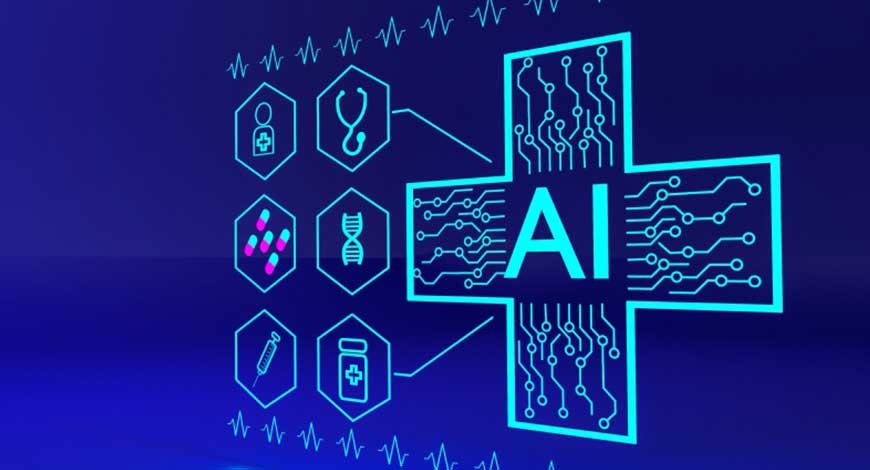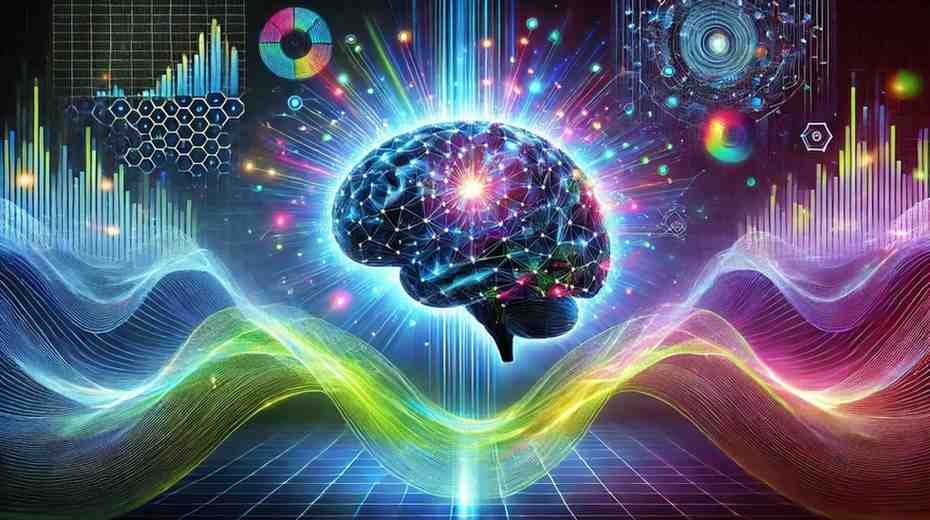The Future of AI in Education: Trends and Predictions
The Future of AI in Education: Trends and Predictions
Introduction
Education is the cornerstone of personal and societal growth, and as technology continues to evolve, it is reshaping how we learn and teach. Artificial Intelligence (AI) is at the forefront of this transformation, offering innovative solutions to age-old challenges in education. From personalized learning to administrative efficiency, AI is revolutionizing the way students learn and educators teach. This article explores the future of AI in education, the trends shaping this field, and predictions for how AI will continue to transform learning in the years to come. By understanding the potential of AI in education, we can better prepare for a future where learning is more accessible, engaging, and effective.
What is Artificial Intelligence (AI)?
Understanding the Basics
Artificial Intelligence (AI) refers to the simulation of human intelligence in machines that are programmed to think, learn, and make decisions. These machines can analyze data, recognize patterns, and perform tasks that typically require human intelligence, such as problem-solving and decision-making.
Key Features of AI
- Machine Learning (ML): A subset of AI that enables machines to learn from data and improve their performance over time without being explicitly programmed.
- Natural Language Processing (NLP): Allows machines to understand and interpret human language, enabling applications like chatbots and voice assistants.
- Computer Vision: Enables machines to interpret and analyze visual information, such as images and videos.
- Robotics: Combines AI with mechanical engineering to create robots that can perform tasks autonomously or assist humans.
The Current State of Education
Challenges in Traditional Education Systems
Traditional education systems face numerous challenges, including:
- One-Size-Fits-All Approach: Traditional classrooms often follow a standardized curriculum, which may not cater to the individual needs of students.
- Teacher Workload: Educators are often overwhelmed with administrative tasks, leaving less time for personalized instruction.
- Access to Quality Education: Disparities in access to quality education persist, particularly in underserved and remote areas.
- Engagement and Motivation: Keeping students engaged and motivated can be challenging, especially in large classrooms.
- Assessment and Feedback: Providing timely and meaningful feedback to students is often difficult due to time constraints.
The Need for Innovation
Given these challenges, there is a growing need for innovation in education. AI offers a promising solution by providing tools and technologies that can enhance learning, improve efficiency, and make education more accessible.
How AI is Revolutionizing Education
Personalized Learning
One of the most significant impacts of AI in education is its ability to provide personalized learning experiences. AI-powered platforms can analyze student data, such as learning styles, strengths, and weaknesses, to create customized learning paths. This ensures that each student receives instruction tailored to their individual needs, improving outcomes and engagement.
Intelligent Tutoring Systems
AI-powered intelligent tutoring systems (ITS) provide students with personalized support and feedback. These systems can identify areas where students are struggling and offer targeted resources and exercises to help them improve. For example, platforms like Carnegie Learning use AI to provide personalized math tutoring.
Automating Administrative Tasks
AI can automate administrative tasks, such as grading, scheduling, and attendance tracking. This reduces the burden on educators, allowing them to focus more on teaching and less on paperwork. AI-powered tools like Gradescope can grade assignments and exams quickly and accurately.
Enhancing Accessibility
AI is making education more accessible to students with disabilities and those in remote or underserved areas. For example, AI-powered speech-to-text and text-to-speech tools can assist students with hearing or visual impairments. Additionally, online learning platforms powered by AI can provide high-quality education to students regardless of their location.
Improving Engagement and Motivation
AI-powered tools, such as gamified learning platforms and virtual reality (VR) experiences, can make learning more engaging and interactive. These tools can capture students’ interest and motivate them to learn by making the process more enjoyable and immersive.
Data-Driven Decision Making
AI enables data-driven decision-making in education by analyzing vast amounts of data to provide insights and recommendations. Educators and administrators can use this data to identify trends, assess the effectiveness of teaching methods, and make informed decisions to improve outcomes.
Real-World Applications of AI in Education
Adaptive Learning Platforms
Adaptive learning platforms, such as DreamBox and Knewton, use AI to create personalized learning experiences for students. These platforms adjust the difficulty and content of lessons based on the student’s performance, ensuring that they are always challenged but not overwhelmed.
Virtual Teaching Assistants
AI-powered virtual teaching assistants, such as Jill Watson (developed by Georgia Tech), can answer student questions, provide feedback, and assist with administrative tasks. These assistants can handle routine inquiries, freeing up educators to focus on more complex tasks.
Language Learning Apps
AI-powered language learning apps, such as Duolingo and Babbel, use NLP and machine learning to provide personalized language instruction. These apps can adapt to the learner’s pace and provide instant feedback, making language learning more effective and enjoyable.
Predictive Analytics
AI-powered predictive analytics tools can help educators identify students who are at risk of falling behind or dropping out. By analyzing data such as attendance, grades, and engagement, these tools can provide early interventions to support at-risk students.
Smart Content
AI-powered smart content platforms, such as Content Technologies, Inc. (CTI), can create customized textbooks and learning materials. These platforms use AI to analyze student data and generate content that is tailored to the individual needs of each student.
The Benefits of AI in Education
Improved Learning Outcomes
AI enhances learning outcomes by providing personalized instruction and targeted support. This ensures that students receive the help they need to succeed, leading to better academic performance.
Increased Efficiency
By automating administrative tasks and providing data-driven insights, AI increases efficiency in education. This allows educators to focus more on teaching and less on paperwork, improving overall productivity.
Enhanced Accessibility
AI makes education more accessible to students with disabilities and those in remote or underserved areas. This ensures that all students have the opportunity to receive a quality education.
Greater Engagement
AI-powered tools, such as gamified learning platforms and virtual reality experiences, make learning more engaging and interactive. This captures students’ interest and motivates them to learn.
Data-Driven Decision Making
AI enables data-driven decision-making in education, providing educators and administrators with the insights they need to improve outcomes. This ensures that resources are used effectively and that teaching methods are continuously improved.
Challenges and Concerns
Data Privacy and Security
The use of AI in education involves the collection and analysis of vast amounts of student data. Ensuring the privacy and security of this data is a major challenge.
Ethical Considerations
AI raises ethical concerns, such as the potential for bias in algorithms and the impact on employment in the education sector. It is essential to address these concerns to ensure that AI is used responsibly.
Integration with Existing Systems
Integrating AI with existing education systems can be complex and requires significant investment. Ensuring compatibility and seamless operation is a major challenge.
Trust and Acceptance
Gaining the trust and acceptance of educators, students, and parents is essential for the successful adoption of AI in education. Educating stakeholders about the benefits and addressing concerns is crucial.
Digital Divide
The digital divide refers to the gap between those who have access to technology and those who do not. Ensuring that all students have access to AI-powered tools and resources is essential for equitable education.
The Future of AI in Education
Continued Innovation
The future of AI in education will be driven by continued innovation. Advances in machine learning, natural language processing, and robotics will further enhance the capabilities of AI and open up new possibilities for its application in education.
Increased Adoption
As the benefits of AI become more widely recognized, we can expect to see increased adoption of the technology in education. More schools, colleges, and universities will invest in AI-powered tools to improve learning outcomes and operational efficiency.
Collaboration and Partnerships
The successful implementation of AI in education will require collaboration and partnerships between technology providers, educational institutions, and governments. Public-private partnerships will play a crucial role in driving innovation and investment in AI solutions.
Focus on Ethical AI
As AI becomes more prevalent in education, there will be a growing focus on ensuring that it is used ethically and responsibly. This includes addressing issues like bias, transparency, and accountability.
Lifelong Learning
AI will enable lifelong learning by providing personalized learning experiences for individuals of all ages. This will help people continuously update their skills and knowledge, ensuring that they remain competitive in the job market.
Conclusion
AI is revolutionizing education by providing personalized learning experiences, automating administrative tasks, and enhancing accessibility. From intelligent tutoring systems to predictive analytics, AI offers numerous benefits for students, educators, and administrators alike. While challenges remain, the continued innovation and collaboration among stakeholders will pave the way for a more efficient, accessible, and equitable education system. As we look to the future, the potential of AI to transform education is immense, offering a promising path towards better learning outcomes and lifelong learning opportunities for all.




Post Comment